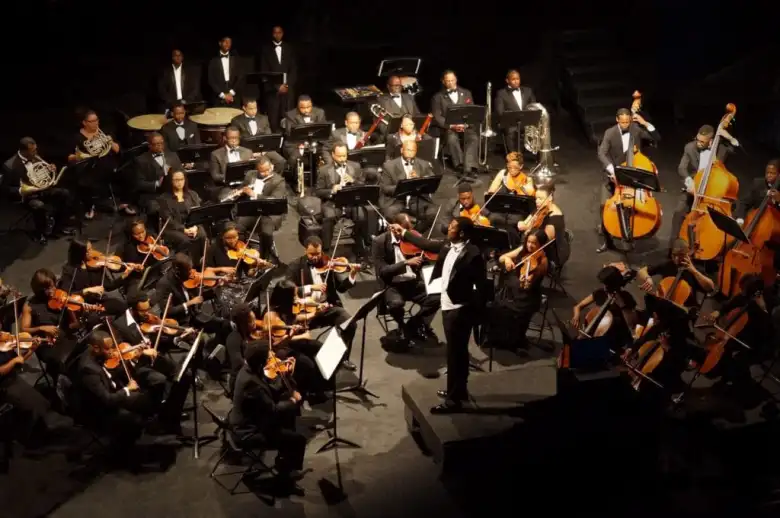By: Haven Bombay Oravec
In recent years, orchestras across the United States have made significant strides in diversifying their ranks, recognizing the importance of representation and inclusivity. While there has been progress in cultivating diversity, a concerning disparity still persists when it comes to the representation of black musicians within these renowned musical institutions.
In recent years, industries across the United States have made significant strides in diversifying their ranks, recognizing the importance of representation and inclusivity; however, a deeply concerning disparity persists, particularly evident in the underrepresentation of black people in numerous fields, including corporate leadership, film and television, technology, fashion, education, the legal profession, publishing, and notably, music. This issue has recently garnered attention due to the stark underrepresentation of black musicians within renowned orchestras and musical institutions, highlighting the urgent need for systemic change and equitable opportunities.
Orchestras have long been associated with European classical music traditions, and for many years, the industry was predominantly comprised of white musicians. However, recognizing the need for change, orchestras have actively pursued initiatives to diversify their ensembles, aiming to reflect the multicultural fabric of American society.
Efforts have been made to broaden recruitment strategies, expand outreach programs, and eliminate biases in the auditioning process. Many orchestras have implemented blind auditions, where musicians perform behind a screen to ensure the focus remains solely on their talent and skill, rather than their appearance or background.
As a result, the composition of orchestras has indeed become more diverse, with an increase in the representation of musicians from Asian, Hispanic, and other minority backgrounds. According to a study by the League of American Orchestras, people of color now make up about 21 percent of orchestra players nationwide. While this progress is commendable and has been celebrated as a step towards inclusivity, the same study found that the number of black players barely shifted, rising to 2.4 percent from 1.8 percent. It is crucial to address the persistent underrepresentation of black musicians, as it is a continuous challenge.
Multiple factors contribute to the continued underrepresentation of black musicians in orchestras. Historical barriers, limited access to quality music education in underprivileged communities, and the lack of representation at higher levels of musical training all play significant roles in this disparity.
The systemic issues that hinder the participation of black musicians in orchestras require multifaceted solutions. Organizations should actively collaborate with schools, community centers, and music programs to create pathways for aspiring black musicians. Scholarships, mentorship programs, and workshops aimed specifically at providing support and opportunities for black talent can help bridge the gap.
Furthermore, orchestras can also explore partnerships with historically black colleges and universities, which often have strong music programs. Building relationships with these institutions can facilitate a more inclusive pipeline that encourages black musicians to pursue careers in orchestras. By establishing partnerships, orchestras can tap into the wealth of talent present in these institutions and create opportunities for black musicians to showcase their skills on a larger stage.
In addition to addressing systemic barriers, orchestras must also examine their internal culture and practices. Creating a welcoming and inclusive environment that values diversity at all levels is vital. Engaging in open dialogues, implementing diversity training for orchestra members, and establishing recruitment policies that actively seek out black talent can contribute to a more representative and inclusive industry.
Orchestras can also collaborate with prominent black musicians and composers, inviting them to perform as guest artists or commission works that reflect a diverse range of cultural experiences. By featuring black musicians prominently, orchestras can not only showcase their talent but also inspire aspiring black musicians and demonstrate that they have a place within these prestigious institutions.
Ultimately, it is essential to recognize that achieving true diversity and representation within orchestras requires sustained commitment and collaboration. Orchestras, music institutions, educational bodies, and communities must work together to break down the barriers that hinder black musicians’ full participation in the industry. Moreover, it is imperative that similar action is taken in many other industries where black underrepresentation persists. By addressing these issues collectively, we can strive for a more inclusive and representative future for black individuals not only in the world of music but across all professional sectors.
Ultimately, it is essential to recognize that achieving true diversity and representation within orchestras requires sustained commitment and collaboration. Orchestras, music institutions, educational bodies, and communities must work together to break down the barriers that hinder black musicians’ full participation in the industry. Moreover, it is imperative to take similar action in other industries where black underrepresentation persists, including technology, film and television, fashion, education, the legal profession, and publishing. By addressing these issues collectively, we can strive for a more inclusive and representative future for black individuals not only in the world of music but across all professional sectors.











